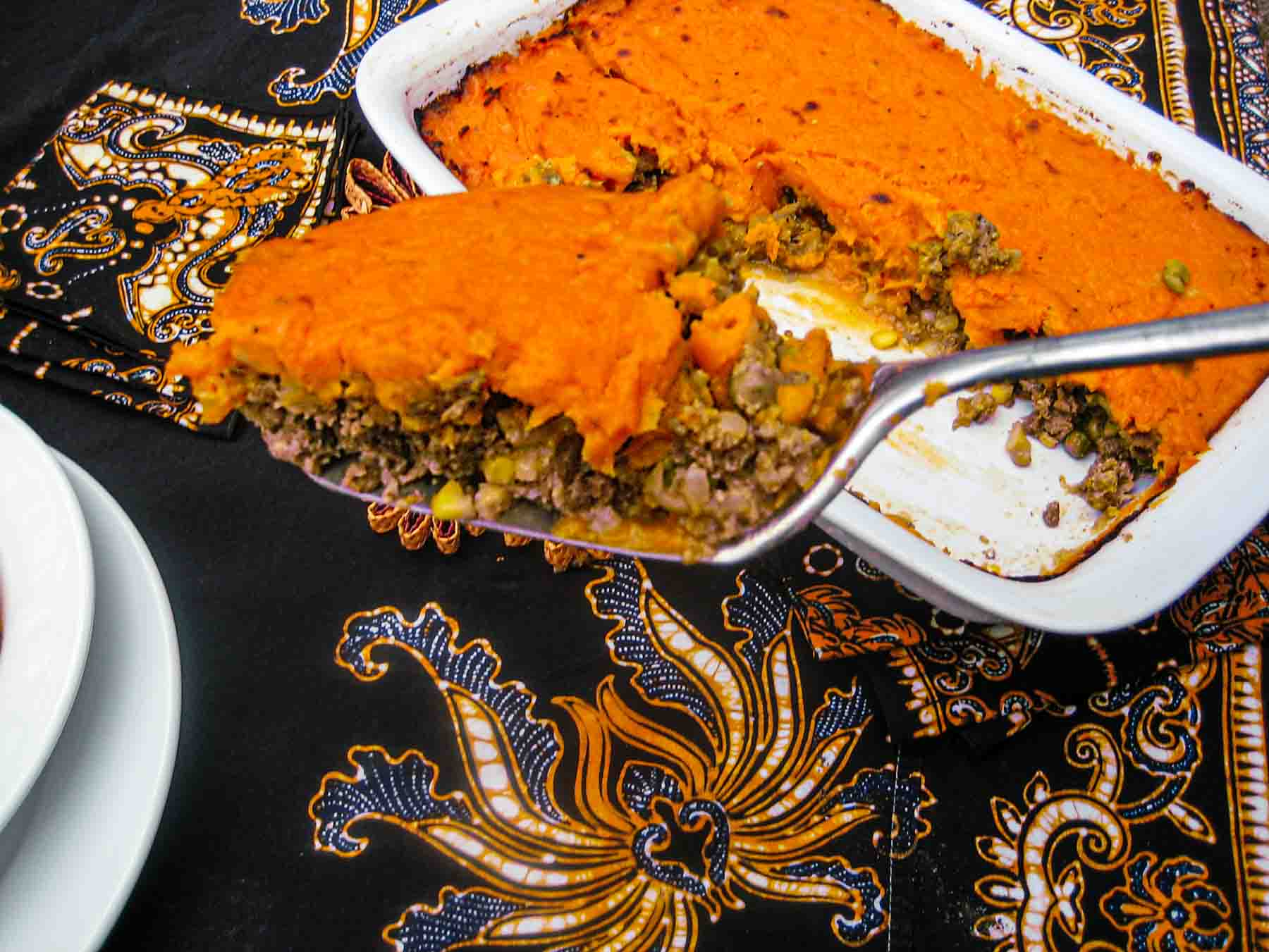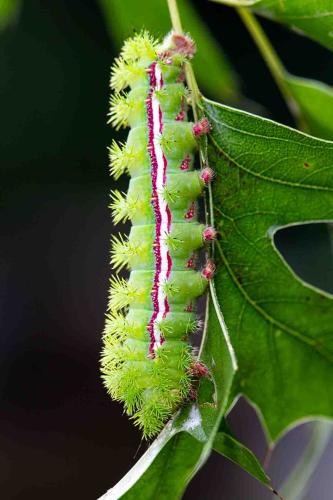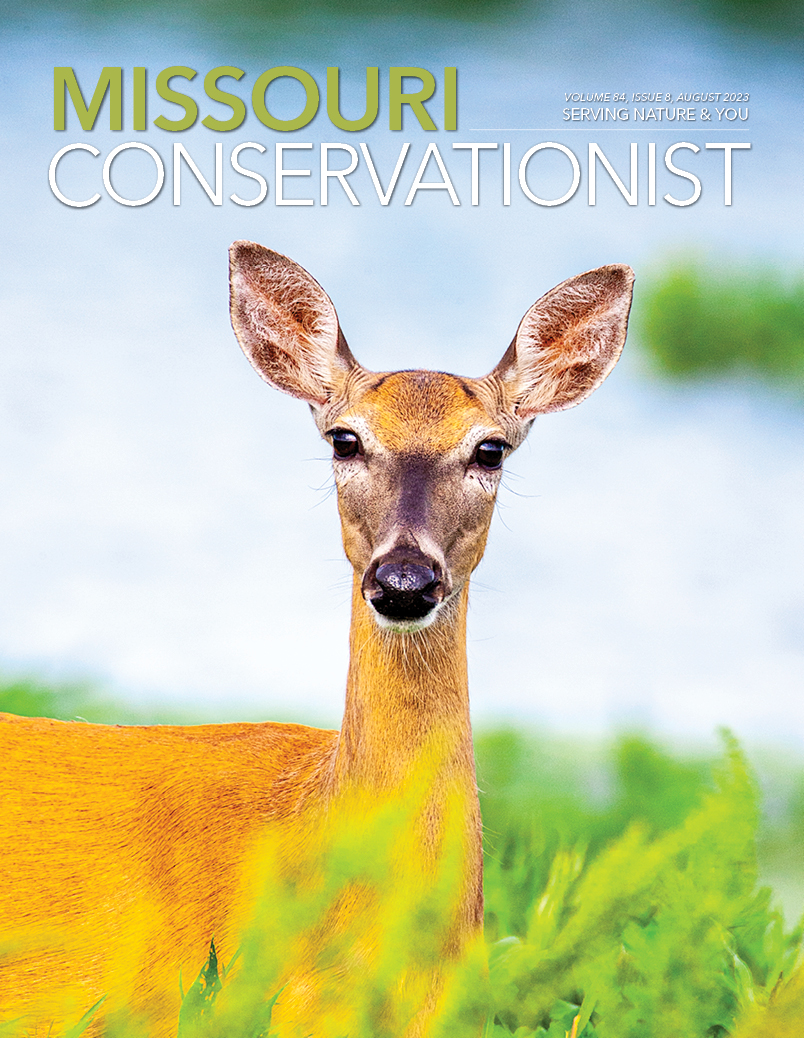MDC is Going to the Fair
Discover nature at the Missouri State Fair Aug. 10–20
MDC will be at the Missouri State Fair in Sedalia, giving you a chance to discover nature in the heart of the fairgrounds!
Visit the Conservation Building from 9 a.m. to 7 p.m. each day of the fair to see live fish and other native animals such as snakes, turtles, and amphibians. Learn about and see displays of native plants that help butterflies and other important pollinators. Ask MDC staff conservation-related questions, get educational materials, and have fun.
Join us Friday, Aug. 11, for Missouri Department of Conservation Day — a full day of fun and excitement sponsored by MDC! For more information, visit mostatefair.com.
New Hunting Books Available
Missouri deer, turkey, waterfowl, and dove hunters can get the most current information on upcoming fall hunting from MDC’s new 2023 Fall Deer & Turkey Hunting Regulations and Information booklet and Migratory Bird and Waterfowl Hunting Digest 2023–2024.
The 2023 Fall Deer & Turkey Hunting Regulations and Information booklet has detailed information on fall deer and turkey hunting seasons, limits, permits, managed hunts, regulations, conservation areas to hunt, post-harvest instructions, chronic wasting disease updates, and more. The booklet is available where permits are sold and online at mdc.mo.gov.
The Migratory Bird and Waterfowl Hunting Digest 2023–2024 has detailed information on waterfowl hunting along with hunting doves and several other migratory game birds, such as rail, snipe, and woodcock. It also has information on needed permits and duck stamp requirements, hunting seasons and limits, hunting areas, regulations, and more. The digest is available where permits are sold and online at short.mdc.mo.gov/Zjw.
Buy Missouri hunting and fishing permits from vendors around the state, online at mdc.mo.gov/permits, or through MDC’s free mobile app, MO Hunting, available for download through Google Play or the App Store.
Lonnie Hansen named Master Conservationist
MDC and the Missouri Conservation Commission honored retired MDC Wildlife Biologist Lonnie Hansen of Columbia with the Master Conservationist Award. Hansen is the 67th person to receive the award. Hansen began his career with MDC in 1987 as a wildlife biologist, a position he held until his retirement more than 30 years later in January 2015.
During his time with MDC, Hansen focused primarily on deer management. Early in his career, he designed and implemented large-scale deer research projects to collect reproductive and survival data. This information allowed MDC to set more meaningful harvest quotas and better manage the state’s deer population. He also led MDC’s efforts to better engage and measure public opinion on deer management and related regulations. He initiated the design and implementation of MDC’s electronic system to sell permits and collect harvest data and hunter demographic data, called Telecheck.
Hansen also led efforts to help landowners whose crops suffered deer damage with a simplified process to obtain special permits and reduce their specific problems.
Hansen also guided MDC when chronic wasting disease (CWD) became a national concern in the early 1990s. CWD is a fatal disease that infects deer and members of the deer family, called cervids.
Hansen also initially proposed, designed, and fostered a program to reintroduce once-native elk into the Ozark region of Missouri. The result of his efforts is a growing herd of free-ranging elk in select areas of the Missouri Ozarks in and around Peck Ranch and Current River conservation areas. The elk restoration effort has resulted in countless elk-viewing opportunities by the public and an annual elk hunting season.
Lee Redmond Joins Conservation Hall of Fame
MDC and the Missouri Conservation Commission posthumously honored retired MDC Assistant Fisheries Division Chief Lee Redmond by inducting him into the Missouri Conservation Hall of Fame. Redmond, formerly of Lohman, died Sept. 20, 2022, at age 83. Redmond is the 47th inductee into the Missouri Conservation Hall of Fame.
Redmond joined MDC in 1963 as a fisheries research biologist. He then became a fisheries management supervisor and assistant fisheries division chief before his retirement in 2000 after 37 years. While at MDC, he implemented fish size limits for lakes throughout the state and was instrumental in establishing MDC’s urban fishing program, one of the first in the nation. Redmond also drafted MDC’s original Municipal Lakes Program, which later became the Community Assistance Program.
Redmond also garnered federal funds for MDC for sportfishing. Those funds helped establish the first nationally recognized stream management program, Streams for the Future. He also led research on fisheries management techniques, authored many nationally recognized scientific papers on the topic, and gave numerous presentations.
He was regarded as an expert in fisheries management and was a leader in the American Fisheries Society (AFS) where he served in several capacities, including as president from 1994–1995. He was very active in the state, national, and international AFS and was honored by the AFS with numerous awards. He was a charter member of the AFS Missouri Chapter, which created the Lee Redmond Citizen’s Award in his honor for persons who make substantial contributions to Missouri’s aquatic resources. He was elected to the Fisheries Management Hall of Excellence in 2001.
Lieutenant Lucas McClamroch
Chariton, Linn, Carroll, Livingston, Grundy, and Mercer counties
August is the threshold of hunting season. The coming months have something for just about every hunter — from waterfowl to deer and turkey to dove and small game. Take this month to prepare by siting in your firearm and bow. Visit one of the state’s five staffed shooting ranges or 70 unstaffed shooting ranges. Regardless of your experience or skill level, you can become a sharper, safer hunter at one of MDC’s ranges. Plan ahead before you go. Staffed ranges are open during certain times while unstaffed ranges are first come, first served. Always be courteous to other patrons and remember, safety is key. For more information about Missouri’s ranges, visit short.mdc.mo.gov/Z9W.
We’ve taken a British favorite, usually made with beef or lamb, and put a Missouri spin on it! Shepherd’s pie adapts well to wild-harvested, tasty, lean venison. Top with sweet potatoes for a sweeter twist than the traditional white-potato topping.
Serves 6

Steam potatoes in double broiler until tender, about 25 minutes. Drain water from bottom pan and pour in potatoes. Add butter and syrup. Season to taste with salt and pepper. Mash mixture until smooth.
Grind whole spices in an electric grinder or mortar and pestle, then mix with cayenne pepper, turmeric, cinnamon, and salt. In a large bowl, mix venison with spice blend, onions, and garlic.
Preheat oven to 350 degrees. Butter 9- by 12-inch glass or ceramic baking dish. Heat olive oil in a large sauté pan and cook meat mixture until brown and cooked through, turning and breaking up large pieces. Season to taste with salt and pepper. Add more cayenne if you desire a hotter taste. Let meat mixture cool, then mix in peas, corn, half and half, and egg.
Transfer meat mixture to the prepared baking dish. Spoon a smooth layer of mashed potatoes over the top. Bake until heated through and potatoes begin to brown around edges, about 45 minutes. Place under the broiler for a couple of minutes to brown top. Let stand 5 minutes before serving.
Note: This dish can be prepared a day ahead, then covered and refrigerated for later use. You’ll need to increase the baking time by about 15 minutes if you put it into the oven cold.
This recipe is from Cooking Wild in Missouri by Bernadette Dryden, available for $16 at most MDC nature centers and online at mdcnatureshop.com.
Topping
- 2½ pounds sweet potatoes, peeled, cut into 2-inch pieces
- 1 medium russet potato, peeled, cut into 2-inch pieces
- 2 tablespoons butter
- 2 tablespoons pure maple syrup
Spice blend
- ¼ teaspoon whole coriander
- ¼ teaspoon whole cumin
- ¼ teaspoon whole fenugreek
- ¼ teaspoon cardamom seeds
- ¼ teaspoon whole mustard seeds
- ¼ teaspoon whole fennel seeds
- ¼ teaspoon whole cloves
- 1½ teaspoons cayenne pepper
- 1 teaspoon turmeric
- ½ teaspoon cinnamon
- 1 teaspoon salt
Meat mixture
- 1½ pounds ground venison
- 2 cups chopped onions
- 5 large garlic cloves, minced
- 3 tablespoons extra-virgin olive oil
- ¾ cup frozen peas
- ¾ cup frozen corn kernels
- ½ cup half and half or cream
- 1 egg, lightly beaten




Io Moth Caterpillar
Mature io moth caterpillars are yellowish green to bluish green with a red-and-white stripe on the sides. They are thickly covered with bristly, stinging spines that cause severe irritation in some people. When young, caterpillars are orange and stay in groups, sometimes “marching” in a single file line. They become more solitary as they mature. The caterpillars are herbivores that graze on vegetation. Although the caterpillars have stinging spines for defense, some predators probably are immune to them, feeding on them anyway.
And More...
This Issue's Staff
Editor - Angie Daly Morfeld
Associate Editor - Larry Archer
Photography Editor - Cliff White
Staff Writer - Kristie Hilgedick
Staff Writer - Joe Jerek
Staff Writer – Dianne Van Dien
Designer - Shawn Carey
Designer - Marci Porter
Photographer - Noppadol Paothong
Photographer - David Stonner






















